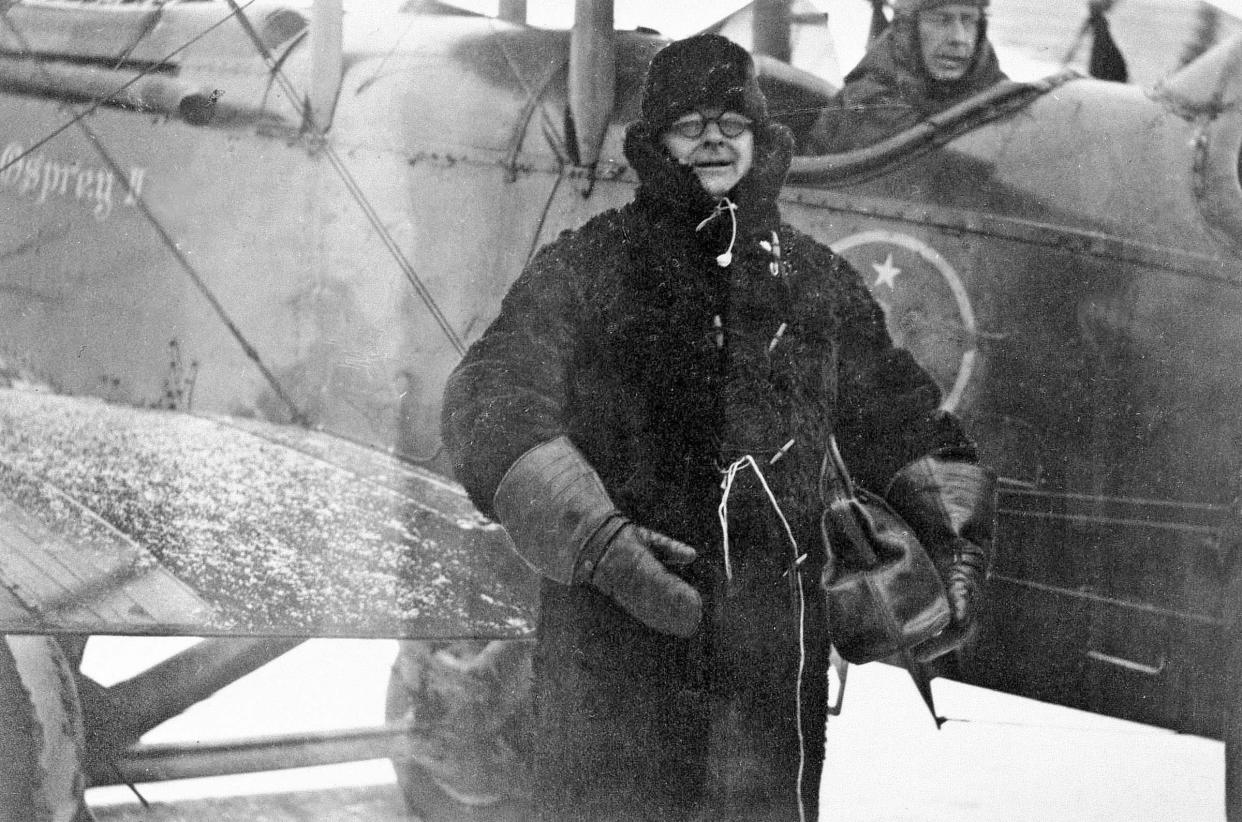Looking Back: The first flight to Beaver Island

CHARLEVOIX — One hundred years ago, Feb. 7, 1923, occurred a milestone event in the history of Charlevoix — the first flight to Beaver Island.
Totally unplanned, never having been thought possible before, it was occasioned by a medical emergency that necessitated quick action and the participation of a U.S. government aircraft. And no ordinary aircraft did it turn out to be.
Charlevoix Courier, Feb. 8, 1923: “DR. ARMSTRONG UP IN THE AIR. Big Army Relief Plane on Relief Trip to Beaver Island. Last Saturday, Jesse Cole, sixteen years of age, was working in the (Beaver Island) woods and was seriously injured by a ‘log jammer’ that was being handled by the injured young man and his assistants.”
A frantic emergency call was placed from the island to Charlevoix’s Coast Guard station.
“Unfortunately, no doctors reside on the island, hence medical and surgical attention for the sick or injured is not obtainable until such time as a member of the (medical) fraternity can arrive from the mainland. Boats are no longer making trips on account of the dangers of navigation at this season and the only way that a surgeon could make the trip was by the airways route but this was considered impracticable as airplanes are non-existent in this locale. However, this was the last recourse and the matter was taken up with government officials at Selfridge Field, near Mount Clemens, who readily consented to the proposition and in compliance with the request a machine was started from Selfridge Field for Charlevoix Tuesday afternoon but encountered a heavy snow storm near Grayling where it made a forced landing (in a snowbank) and was obliged to remain.
Subscribe:For the latest local news
“Wednesday morning a second plane was started from Selfridge Field, made a successful (250-mile) flight, landing on Pine Lake (Lake Charlevoix) near the Belvedere resort at 9:15 a.m. After taking on needed supplies and with Dr. R. B. Armstrong as a passenger, the pilot started on the last leg of his trip at just the noon hour. Fifteen minutes later the plane effected a landing at a small inland lake, but a short distance from the Cole home on Beaver Island.”
The landing site was made visible from the air by “a large mark in the form of a cross, made of evergreen boughs” laid on the ice of Lake Genesereth near the island’s southern tip.
“Examination of the patient revealed the fact that his injuries consisted in the main of a skull fracture from which speedy recovery is reasonably certain, regardless of the fact that the young man remained in an unconscious condition for over seventy consecutive hours. Wednesday morning he regained consciousness for the first time subsequent to the time of the accident.
“With his professional work finished, the machine with the Dr. as a passenger made the return trip to Charlevoix where they landed, eighteen minutes later. When they left for Beaver Island it was their intention to bring the patient to Charlevoix, but this, owing to the young man’s condition, was deemed impracticable, hence he was left with his parents.
“The machine was driven by Lieut. (Russell) Meredith, a West Point graduate, stationed at Selfridge Field.”
The first plane sent was still snowbound, no other of its type was at Selfridge, so improvisation had to be made. At the top level.
“The only machine (a two-passenger Osprey II army biplane) suitable at the field being the private plane of General (William 'Billy') Mitchell, who was at Kelly Field, Texas. Communicating with the General, permission was given to use his machine for this special trip.”
General Billy Mitchell is considered to be the father of the U. S. Air Force, arguing for its separation from the Army, which resulted in his being court-martialed for insubordination in 1925. He resigned from the service not long after. A film of the incident, starring Gary Cooper, was made by director Otto Preminger in 1955.
Dr. Robert Armstrong was a member of the University of Michigan Medical School’s first graduating class of 1894, and went on to become one of the most highly respected and influential physician/surgeons ever to practice in Charlevoix. His experience with the Cole incident underscored the now crucial need for air contact between island and mainland in all seasons. A few years later, regular service was put into operation, which remains to this day.
This article originally appeared on The Petoskey News-Review: Looking Back: The first flight to Beaver Island

